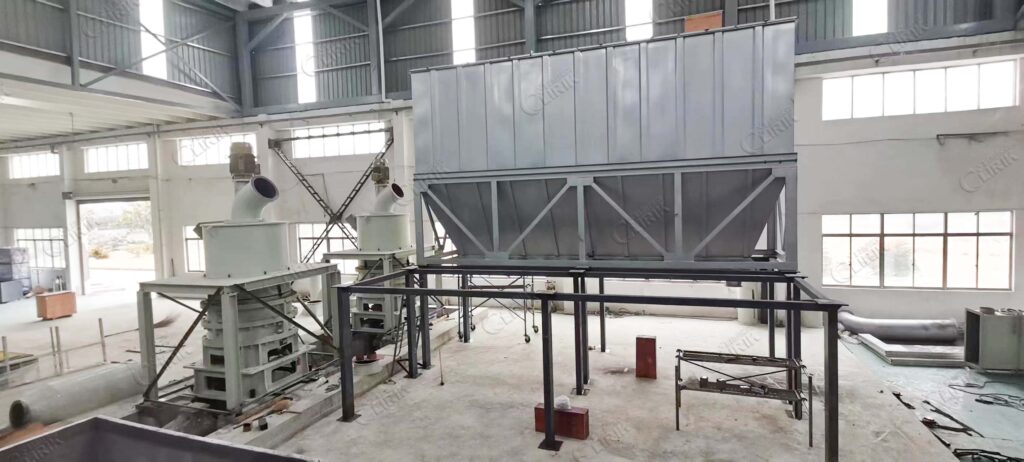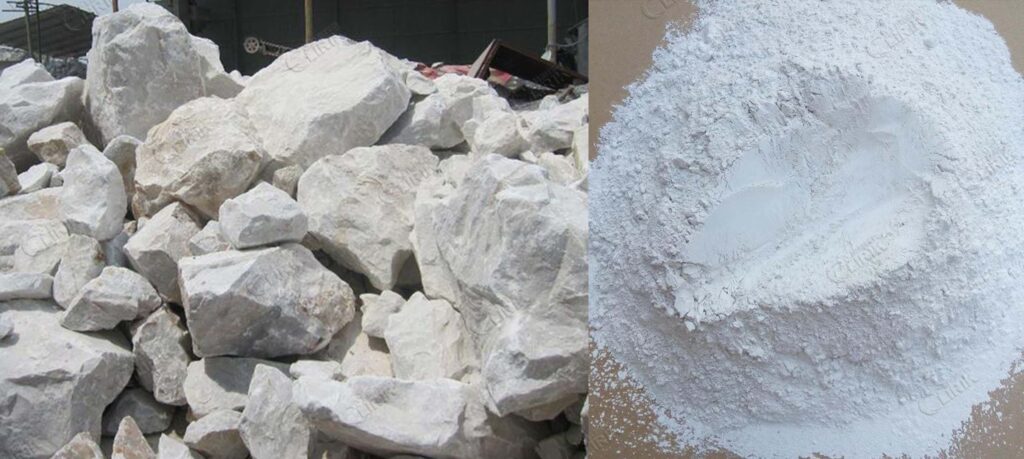Preparation Stage
- Material Collection and Preprocessing
Collect raw calcium carbonate materials, ensuring they are of suitable quality and size for grinding. They should be in lump or coarse powder form. If in large lumps, they may need to be crushed using a jaw crusher or similar equipment to a size generally less than 20mm.
Clean the raw materials to remove impurities like dirt and stones, through washing or screening processes.
2. Equipment Inspection and Setup
Thoroughly inspect the Clirik HGM mill, checking mechanical components such as grinding rollers, rings, and the classifier for wear or damage, and replace any worn parts.
Verify electrical connections and the control system, ensuring stable power supply and proper functioning of control buttons and indicators.
Set the mill's parameters according to the desired fineness of the calcium carbonate powder. The classifier speed can be adjusted to achieve the required particle size.
3.Safety Measures
Ensure all safety equipment is in place and operators are wearing appropriate PPE, such as helmets, earplugs, and dust masks.
Check emergency stop buttons and safety guards to ensure they are easily accessible and functioning correctly.

Grinding Process
- Feeding the Material
Start the feeding system, which may be a screw feeder, vibrating feeder, or similar device, to supply the preprocessed material into the mill's hopper at a steady rate.
As the material enters the grinding chamber, it is evenly distributed around the grinding ring and crushed by the grinding rollers.
2. Grinding and Classification
The grinding process involves the continuous rotation of the grinding ring and rollers, generating shearing and compressive forces to grind the material into finer particles.
The ground material is carried by the airflow generated by the mill's blower system into the classifier, which separates particles based on size.
The classifier's rotating impeller determines the particle size that can pass through. Fine particles meeting the required fineness are collected in the powder collector, while coarser particles are returned to the grinding chamber.
3.Powder Collection
The fine calcium carbonate powder is carried by the airflow into the powder collector, which may be a bag filter or cyclone separator.
In a bag filter system, the fine powder is trapped on the filter bags' surface, while clean air is exhausted out.
In a cyclone separator system, centrifugal force causes the fine powder to separate from the air and settle at the bottom, from where it is discharged.

Post-processing and Packaging
- Quality Inspection
After grinding, a sample of the collected powder should be taken for quality inspection. The fineness should be checked using sieve analysis or a laser particle size analyzer.
Other quality parameters, such as moisture content and impurity levels, should also be tested to ensure they meet acceptable ranges.
2. Packaging
Once the powder passes quality inspection, it can be packaged in a clean and dry environment. It can be packaged in bags, drums, or bulk containers, depending on customer requirements.
3.Storage and Transportation
Store the packaged powder in a dry, well-ventilated warehouse, free from moisture and direct sunlight.
When transporting, ensure vehicles are clean and dry, and packages are securely stacked. Follow relevant regulations and safety guidelines.
